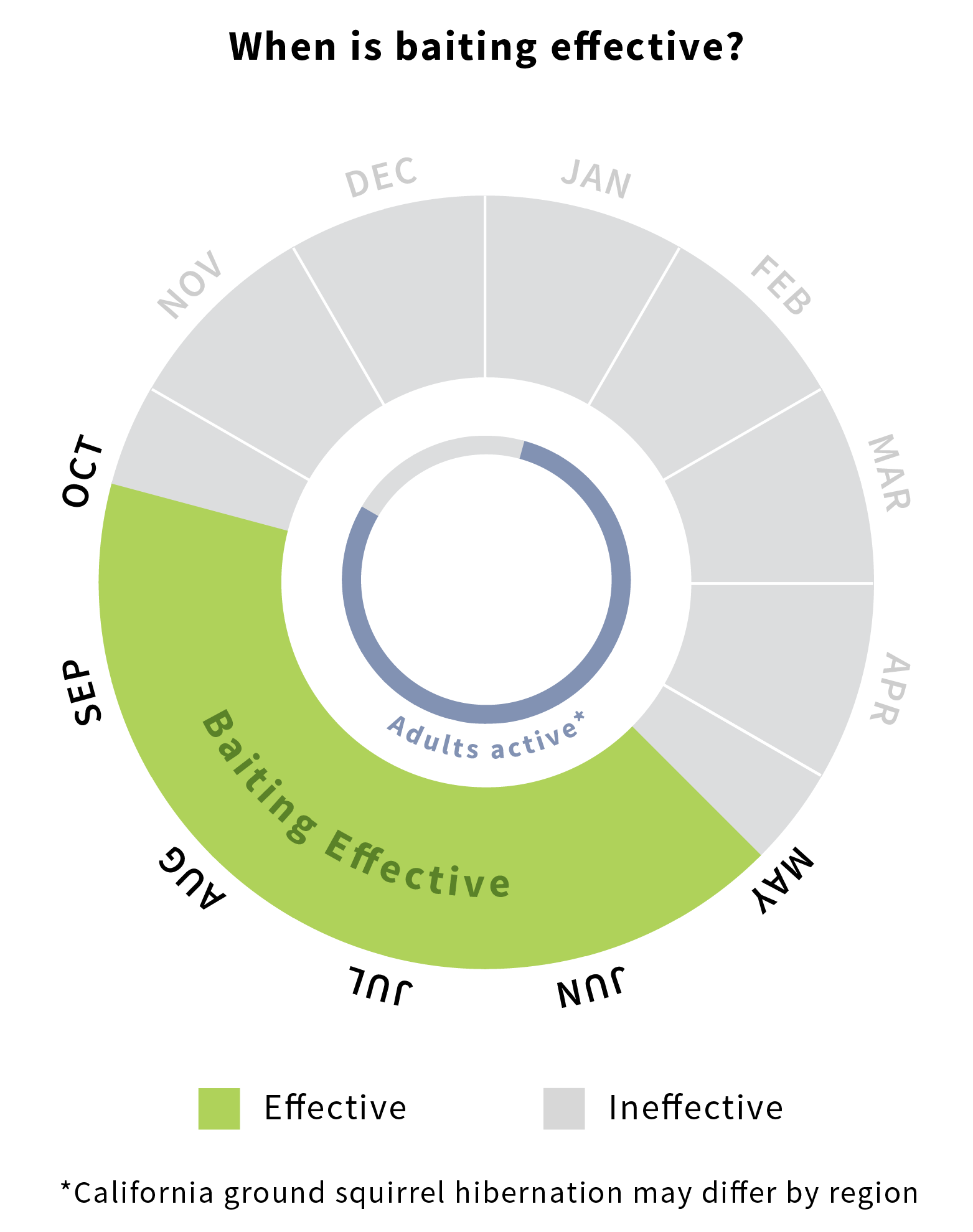Toxic Baits | California ground squirrel
Return to California ground squirrel menu
|
Ground squirrel baits fall into two categories: first-generation anticoagulant rodenticides (FGARs) and the acute toxicant zinc phosphide. With some minor exceptions, most are Restricted Use Pesticides. It is important to implement your baiting program according to the label to ensure maximal effectiveness. Improper bait application can promote bait resistance in the ground squirrel population.
Disposal
When applying bait, it is important to check daily for ground squirrels carcasses. With anticoagulant baits, nontarget wildlife may be at risk of secondary toxicity if they consume the poisoned squirrels. Collect dead rodents and dispose of them by deep burying or burning. Check with your local Agricultural Commissioner’s Office to make sure burning is permitted in your area. It is also acceptable to dispose of carcasses by double-plastic bagging or wrapping in newspaper and discarding them in the trash. Ensure that trash cans are not accessible to nontarget wildlife. Wear disposable plastic gloves or other suitable hand protection if you must pick up carcasses by hand. |
Comparison of FGARs and Zinc Phosphide
|
Download this table as a PDF |
|
Note to homeowners: FGAR options are limited for homeowner use. Some unrestricted products are available for use. Zinc phosphide can only be applied by licensed pest management professionals.
|


